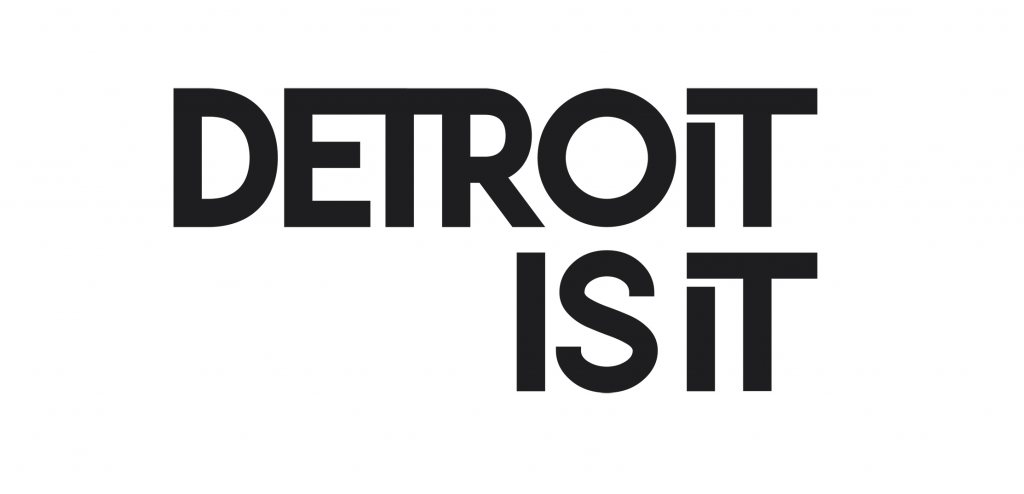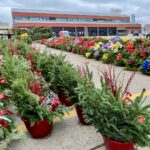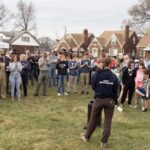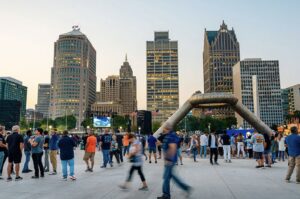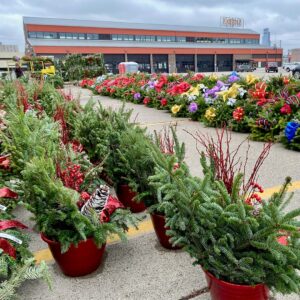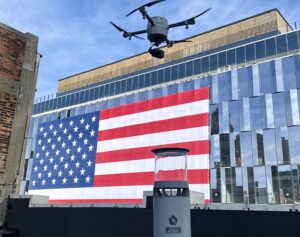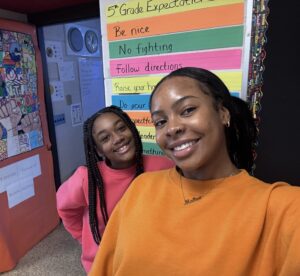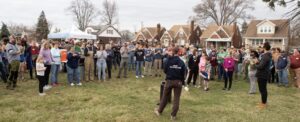Eliza Howell Park has long been one of Detroit’s hidden gems. Located on the city’s northwest side, it spans nearly 250 acres, making it one of the largest parks in the city.
The land was originally donated in the 1930s by Eliza Howell, a real estate developer who intended the area to remain a natural refuge for public enjoyment. For decades, the park served as a vital green space, drawing families, nature enthusiasts, and residents seeking a quiet escape within the city. Its vast woodlands, open meadows, and floodplains nurtured a rich ecosystem, with deer, foxes, native birds, and wildflowers becoming staples of its landscape.
However, over time, Eliza Howell Park suffered from disinvestment and neglect, falling into a state of disrepair that left its trails overgrown and amenities lacking. Despite this, a dedicated group of community members and nature lovers have continued to care for the park informally, recognizing its ecological and social value. Their grassroots advocacy helped keep attention on the park through some rough years.

ALEXUS BOONE
Then, in 2020, a major stormwater drainage project disrupted large portions of the park, damaging trails and habitat and deepening concerns about how Detroit’s green spaces were being managed.
But now, something new is taking root. Eliza Howell Park is undergoing a reawakening.
In 2023, the City of Detroit secured funding to develop a comprehensive Master Plan for the park’s future. It’s a critical step, not just for restoration, but for envisioning what the park can become. Led by a coalition of five partners – Sidewalk Detroit, Wade Trim, Living Lab, NCS and The City of Detroit —the planning process places community engagement and environmental stewardship at its core. Rather than rushing into renovations, these groups are asking a more thoughtful question: what does the community want this park to be?
Historically, community members have been largely underrepresented in these kinds of planning processes. “That’s changing now,” says Alexus Boone, outdoor strategist for Sidewalk Detroit. “We’re starting with community engagement and giving these underrepresented community members a chance to voice what they want to see. “It’s about Detroit residents taking back their parks for their communities.”
The Master Plan is funded by a grant that flows from the state to the City of Detroit, with a specific focus on engaging the public and collecting the data needed to guide meaningful, long-term improvements. Sidewalk Detroit leads the community engagement effort, and the team is hosting a series of community dinners, neighborhood pop-ups, youth programming days, and visualizing Move & Talks to encourage residents to imagine what the park could be.

ELIZA HOWELL PARK
During a recent dinner, attendees were invited to vote on priority areas, with themes like safety, environmental protection, cleanliness, and inclusive access rising to the top. Boone notes that community members have consistently emphasized the importance of protecting the park’s natural areas, especially its thriving biodiversity and landmark trees, like the 300-year-old oak that anchors much of the site’s ecological identity.
“A lot of people already have a deep relationship with the land,” Boone says. “They want to preserve what makes it special while making it more usable, more welcoming.”
That balance between preservation and access is central to the Master Plan. Boone and her team have heard the call for environmentally sensitive improvements, such as more educational programming around composting, biodiversity, and stewardship.
And the community isn’t just asking for services; they want to be involved. “People want to enhance and increase environmental stewardship opportunities with support from the city,” she says.
This ethos is already visible through programming like birdwatching groups, yoga in the park, butterfly walks, and even overnight campouts designed to make people feel safe and connected to the space. In 2023 Sidewalk Detroit launched art installations that have come to be called eco-artist residencies, which give local artists and residents a hands-on role in creating installations that reflect the park’s environmental mission.

COMMUNITY MEETING
Environmental sustainability also meets social sustainability through workforce development. Boone notes that residents have expressed strong interest in seeing local hiring and youth job training as part of the park’s future. “The community wants to see sustainable, local jobs created by this plan—that’s a big part of what social sustainability looks like here.”
Ultimately, the Master Plan is not just about infrastructure. It’s about reactivating a park that already holds deep meaning and solidifying a vision for its next chapter—one rooted in equity, ecology, and care. As Boone puts it: “Success isn’t one thing. It depends on what the community collectively decides the park should be. A nature preserve has one set of needs. Green infrastructure has another. Finding compromise through this engagement is the crucial yet fun part – it leads to visualizing all that’s possible.”
To follow the Master Plan and park updates, go here: detroitmi.gov/elizahowell
For more on Sidewalk Detroit, and for park updates and events, go here: https://www.sidewalkdetroit.com/eliza-howell-park-landing
As always, be sure to subscribe to our newsletter for regular updates on all things Detroit.
